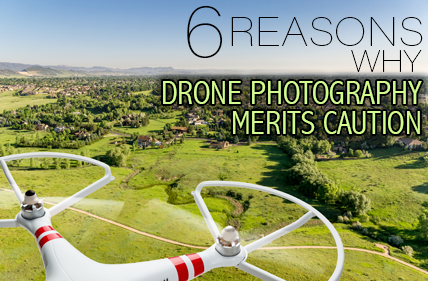 There’s a lot of talk nowadays about drone photography for Real Estate, and for good reason. The technological advancements in drones over a relatively short timeframe has been amazing to watch. As a licensed Realtor myself, as well as a professional Real Estate Photographer, I have been salivating over the idea of aerial photography for quite some time. I had not, however, purchased a drone until very recently. Here’s why.
There’s a lot of talk nowadays about drone photography for Real Estate, and for good reason. The technological advancements in drones over a relatively short timeframe has been amazing to watch. As a licensed Realtor myself, as well as a professional Real Estate Photographer, I have been salivating over the idea of aerial photography for quite some time. I had not, however, purchased a drone until very recently. Here’s why.
The FAA recently published new rules on how drones can be used for commercial purposes. This legislation, called Title 14 of the Code of Federal Regulations (14 CFR, part 107), went into effect on August 29th, 2016. Prior to this, it was extremely difficult to get permission from the FAA to utilize a drone for commercial purposes. That didn’t stop many photographers from taking the business anyway. This is especially true since the threat of enforcement of the existing rules was pretty thin. A LOT of photographers took photos for businesses without any concern for what was perceived to be an unreasonably restrictive regulation. 14 CFR Part 107 clarifies the rules, and makes it easier for drone pilots to obtain permission to fly commercially. Here’s a quick synopsis on what the rule means.
That doesn’t mean that everything’s honky-dory. As Real Estate Agents, we still need to be aware of the issues surrounding drone photography should we choose to utilize it in our listings. It’s not just unlicensed photographers who are at risk if they take photos in exchange for compensation. Businesses (like us) who use photos taken by unlicensed pilots are at risk as well.
Here’s 6 Reasons Why You Should Be Cautious About Drone Photography:
- Commercial Drone Photographers Need To Be Licensed. This is much easier to do compared to before the new legislation became active (you basically had to hold a full pilot’s license before). The licensing requires passing a pretty challenging test taken at an FAA-approved facility. Without passing this test (the Unmanned Aircraft General Exam), it is not possible to be licensed. It’s still a pretty significant barrier to entry.
- Individual Drones Need To Be Licensed. The FAA considers a drone to be a small aircraft, and therefore must be licensed. The FAA Certificate Number must be displayed on the drone. Failure to do so can result in some pretty hefty fines. Civil penalties can go as high as $27,500 and criminal penalties include fines of up to $250,000 and/or imprisonment for up to three years. If you hire a photographer who does not have a registered drone, you will become liable if there’s any damage caused by that photographer.
- Even Licensed Pilots Have Airspace Limitations. Unless your property is located in Class G (uncontrolled) airspace, the photographer will need to get FAA / Air Traffic Control permission to fly. If your listing is in a populated area, there’s a good chance that it is under controlled (Class B, C, D or E) airspace. Commercial drone operations are forbidden without ATC clearance in these areas. As of the date of writing this post, no airspace waivers have been issued by the FAA. None. So be sure to ask your photographer about what type of airspace your property is located in. We make that easy for our clients with this simple online form.
- Liability Insurance Is Not Required. Although it was discussed when writing the legislation, it is not required for commercial drone operators to carry supplemental insurance. Drone insurance is available to photographers by aviation insurance carriers, so be sure to hire one who has taken the extra step to be covered. Insurance will prove that the photographer has been vetted by another institution that is committed to safe and responsible operation.
- Drones Can’t Operate Above People. The only exception to this is people who are a part of the drone crew (Visual Observer, Pilot etc.). Make sure that you notify neighbors in the vicinity of the drone shoot to stay indoors. We use this handy notification card that is placed on neighbors’ doors the day before a shoot. Not a bad idea for the agent to affix a copy of your business card on there as well just in case a neighbor may want to list their home as well!
- Listing Agent Should Be Present For The Drone Shoot. The photographer won’t require entry into the home to shoot aerials. However, as the listing agent you should be present for the shoot. This will help in cases where accidental damage occurs (or where damage is claimed to occur). You’d better believe that the agent with the sign on the lawn is the first person to be called with any complaints. Better to be safe than sorry, so be a witness to what did (and didn’t) happen while the drone was in the air.
The last thing I want to do is frighten you away from utilizing drone photography for your listings. As a professional photographer, I want the business. The pictures themselves are more often than not absolutely stunning. They really do help to market the property in a positive way. By that same token, as a professional photographer it is important to me that the industry follow the (recently) well defined rules on the subject. As a Realtor, I want to make sure that I am not opening myself up to undue liability if I do choose to utilize a drone in my business.
Leave a Reply
You must be logged in to post a comment.